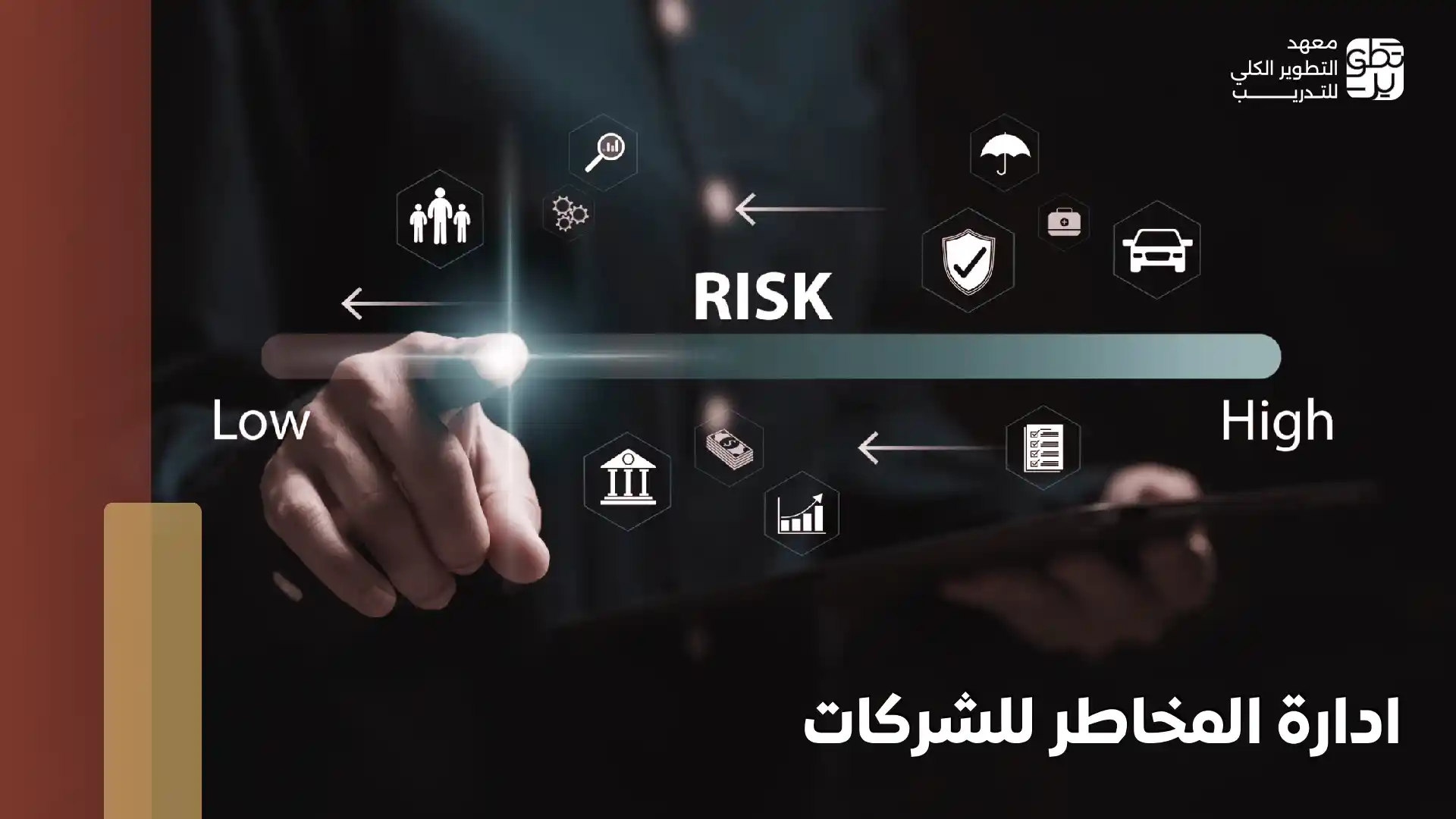
Crisis management is no longer a theoretical or distant topic; it has become a necessity for ensuring the survival and continuity of organizations. A crisis can strike at any moment, and the difference between success and collapse often depends on how well an organization is prepared to handle it.
This is where understanding the types of crisis management and the goals of crisis management becomes essential. Crisis management is considered an integrated strategic process that doesn’t only involve quick reactions but also includes pre-planning, scenario formulation, and preparing teams to make sound decisions under pressure.
In this article, we will detail the different types of crisis management and explain the differences between it and risk management, so that you have a comprehensive guide to understand both. Stay with us until the end.
Types of Crisis Management
Before delving into the types of crisis management, it is important to understand that crises differ in nature and in the way they are dealt with. Therefore, organizations have developed several approaches that help them prepare, respond, and recover effectively.
We can classify crisis management into four main types:
1. Proactive Crisis Management
Proactive crisis management relies on early preparation for crises before they occur. In this type, organizations develop clear strategic plans, define roles within different teams, and train employees to handle crises through simulations and practical exercises. The goal is to ensure that all concerned parties are fully prepared to activate the plans as soon as a crisis occurs.
This type of management helps minimize the impact of crises on operations and makes the organization more capable of responding quickly.
2. Crisis Management in Response
Crisis management in response focuses on quick and immediate intervention as soon as the crisis occurs. When a crisis happens, previously prepared emergency plans are activated, and efforts are coordinated among teams to ensure an effective response. By providing accurate and transparent information to stakeholders, necessary decisions are made to contain the crisis.
This type of management plays a crucial role in reducing damage and ensuring the organization handles the crisis at the highest level of efficiency.
3. Adaptive Crisis Management
Adaptive crisis management depends on flexibility and the ability to continuously adjust to crisis developments. In this type, organizations modify their strategies and plans based on the changes that occur in the situation. Quick and accurate decision-making is essential here.
The goal is to ensure continuous control over the situation by modifying actions flexibly during the crisis, allowing the organization to adapt to any new conditions and achieve the best possible outcomes.
4. Corrective Crisis Management
Corrective crisis management begins after the crisis has passed, focusing on returning to normal as quickly as possible. This includes resuming regular daily activities and conducting a comprehensive performance evaluation during the crisis. After the crisis, successful actions are identified, and areas for improvement are noted, with a review of the plans to ensure lessons are learned for better preparedness in the future.
This type of management enhances the organization’s readiness for future crises.
Don’t hesitate to register now at Macro Development Institute for Training for specialized crisis management training and learn more about risk management. Enhance your team's skills in handling crises efficiently and professionally.
Crisis Management Definition
Crisis management is the process through which organizations handle unexpected and disruptive events, such as natural disasters, financial problems, or technical crises, which may affect individuals, property, or the company’s reputation. The goal of crisis management is to minimize losses, protect the entity, and ensure business continuity through well-thought-out strategic plans.
Crisis management can be defined as both a proactive and reactive strategy; it involves prior preparation through emergency plans and training, as well as effective response when a crisis occurs. The success of organizations in this aspect goes beyond merely overcoming the crisis; it extends to the ability to recover quickly, restore trust, and sometimes turn the crisis into an opportunity for development and improvement.
After understanding the types of crisis management, it remains important to know the types of crises that any organization or company may face. Contact us to learn more about our Risk Management Course in Riyadh.
Types of Crises
Crises come in many forms, and their classification depends on the nature, severity, and impact of the crisis. Some crises may be natural, financial, or administrative, while others may relate to technology or reputation, each requiring a different approach.
Below are the most common classifications of crises:
- Economic and Financial Crises: Such as financial collapses or high inflation rates, these are some of the most dangerous crises that threaten the stability of organizations and nations.
- Natural Crises: Like environmental disasters, earthquakes, and floods, these are events beyond human control and pose significant challenges to emergency plans.
- Technological Crises: Related to security breaches or system failures that could completely disrupt operations, especially in technology-dependent organizations.
- Administrative and Organizational Crises: Arising from poor management or lack of coordination between departments, potentially leading to poor decisions or operational setbacks.
- Reputation and Media Crises: Such as rumors or negative media campaigns that directly affect the organization's image and customer trust.
- Crises by Severity: These can range from weak crises that are easy to handle, to intense crises that may threaten the survival of the organization or society.
- Crises by Frequency: These include recurring crises that are predictable and non-recurring crises that are hard to foresee.
- Crises by Impact: These are crises that have a substantial impact on the entity and crises with marginal effects that can be easily overcome.
Crisis Management Goals
The goal of crisis management is to achieve a set of primary objectives that ensure organizations’ ability to withstand and manage critical situations efficiently. Some of the most important goals of various types of crisis management include:
- Early Detection of Crises: Crisis management helps monitor potential risks and anticipate them before they occur, giving the organization an opportunity to prepare and develop proactive plans.
- Reducing the Severity of Risks: With pre-planned response strategies, the negative impact of crises can be minimized and their spread contained, thus maintaining organizational stability.
- Ensuring Business Continuity: One of the main goals is to minimize downtime during crises and ensure the continuity of operations, thereby maintaining efficiency and productivity.
- Enhancing Communication Efficiency: Crises require effective and fast communication channels within the organization and with stakeholders, which makes managing the situation in an organized way easier.
- Improving Customer Satisfaction: A quick response to crises enhances customer trust in the organization, as they see that it is capable of handling problems without compromising service quality.
- Continuous Learning and Improvement: Crises provide valuable lessons that can be used to develop new strategies and plans, improving the organization’s ability to deal with future crises.
- Protecting Corporate Reputation: Effective crisis management helps protect the organization’s reputation from media distortion or loss of trust from clients and investors.
- Strengthening Legal Position: Well-organized crisis management helps ensure compliance with laws and regulations, reducing legal risks caused by poor handling of emergencies.
Crisis Management Process Steps
As mentioned in the explanation of the types of crisis management, crisis management is not limited to handling the emergency moment of the crisis, but is a comprehensive process that starts from early forecasting and extends through to recovery and learning.
Here are the key steps that form the practical framework for crisis management within organizations:
- Early Forecasting and Monitoring Indicators: The process begins with monitoring potential risks and looking for early warning signs that could turn into a crisis, using analysis and periodic evaluation tools.
- Forming a Crisis Management Team: Establishing a specialized team to lead the crisis, with clear roles and responsibilities assigned to each member to ensure a coordinated and rapid response.
- Creating a Clear Emergency Plan: Preparing alternative plans, determining protocols for handling different scenarios, and training employees on the necessary procedures.
- Immediate Response and Plan Execution: Activating the emergency plan as soon as the crisis occurs, allocating the necessary resources, and making swift decisions to minimize negative effects.
- Effective Communication with Stakeholders: Ensuring transparent and accurate information flows to employees, clients, and partners to maintain trust and reduce confusion.
- Recovery and Resumption of Activities: Working to restore operations to normal as quickly as possible, providing support to affected employees, and fixing resulting damages.
- Review and Documentation of Lessons Learned: After the crisis ends, analyzing the response and documenting the experience to identify strengths and weaknesses, and improving future crisis management plans.
By following this sequence, organizations can transform crises from major threats into opportunities for continuous development and improvement.
Crisis Management Roles and Responsibilities
In the context of discussing types of crisis management, it’s important to emphasize that the success of crisis management largely depends on clear role definitions and responsibility distribution within the organization. Some of the key roles include:
- Top Leadership Role: Senior leadership is responsible for guiding the organization during a crisis, making critical decisions, setting strategic priorities, and ensuring the necessary resources are available to support crisis management efforts. They must also maintain employee and stakeholder trust through transparency and clarity.
- Executive Team Roles: These teams handle field response plans, from managing operational aspects to providing technical and logistical support. They also coordinate between departments to ensure swift response and minimize the crisis’s impact.
- Media and Reputation Management: The media plays a crucial role in shaping the organization’s image during a crisis. Therefore, there needs to be a specialized team for managing communications and media crises, ensuring accurate, unified messages reach the public, managing rumors, and protecting the organization’s reputation.
Other Supporting Roles include:
- Crisis Manager: The overall supervisor of the process and the final decision-maker.
- Communications Lead: Ensures effective communication both internally and externally.
- Operations Lead: Coordinates resources and operational measures.
- Legal Advisor: Provides support to ensure compliance and reduce legal risks.
With this structure, organizations can face crises with flexibility and organization, transforming them from serious threats into opportunities for learning and improvement.
Difference Between Risk Management and Crisis Management
While crisis management and risk management share similarities, the difference between them is fundamental. Risk management is a proactive process that aims to anticipate potential problems before they occur by analyzing risks and developing preventive plans to minimize their likelihood. Crisis management, on the other hand, is a reactive process that begins when the crisis actually occurs, focusing on a quick response and minimizing its negative effects, while making urgent decisions to ensure business continuity and reduce losses.
Risk management asks: “What if a problem occurs? How can we prevent it?” while crisis management asks: “The crisis has happened, what do we do now?”
You can contact us to learn more about the difference between risk management and crisis management.
Success Factors in Crisis Management
The success of crisis management is not achieved by chance; it depends on a set of key factors that help the organization deal efficiently and flexibly with critical situations. Some of these factors include:
- Having Pre-Established Plans: Pre-planning is the cornerstone of managing any crisis. Organizations that have clear, tested emergency plans are more capable of containing a crisis and minimizing its negative effects.
- Understanding the Importance of Time: Time is the most sensitive factor in crises. A rapid response helps prevent the situation from worsening and allows for crucial decisions to be made before it’s too late.
- Training and Ongoing Preparedness: Continuously training employees on their roles during crises ensures team readiness and improves the effectiveness of responses, especially when conducting simulations and practical exercises.
- Flexible Decision-Making: Crises are often unpredictable and changing, so decisions must be flexible and adaptable to evolving situations.
- Relying on Data and Analytics: Accurate information and efficient early warning systems help management make decisions based on facts, rather than improvisation or guesswork.
- Resource Mobilization: One of the key success factors is the organization’s ability to quickly mobilize human and material resources, while fostering a sense of cooperation and shared responsibility among employees.
- Effective Communication System: Clear and transparent communication, both internally and externally, reduces rumors and confusion, ensuring coordinated efforts between all parties while maintaining the organization’s image.
It’s clear that the success of all types of crisis management is linked to the organization’s readiness, flexibility, speed of response, and ability to continuously learn and improve after each crisis.
In conclusion, crisis management is the cornerstone of protecting organizations and ensuring their continuity amidst sudden challenges. The more an organization understands the different types of crisis management and how to handle each type with flexibility and professionalism, the more resilient it will become in minimizing losses.
This highlights the importance of enrolling in specialized crisis management training programs, which provide individuals and leaders with the necessary tools and expertise to create effective plans.
Frequently Asked Questions
What is a crisis?
A crisis is an unexpected event or situation that threatens the stability of an organization or community and requires swift and decisive decisions.

















